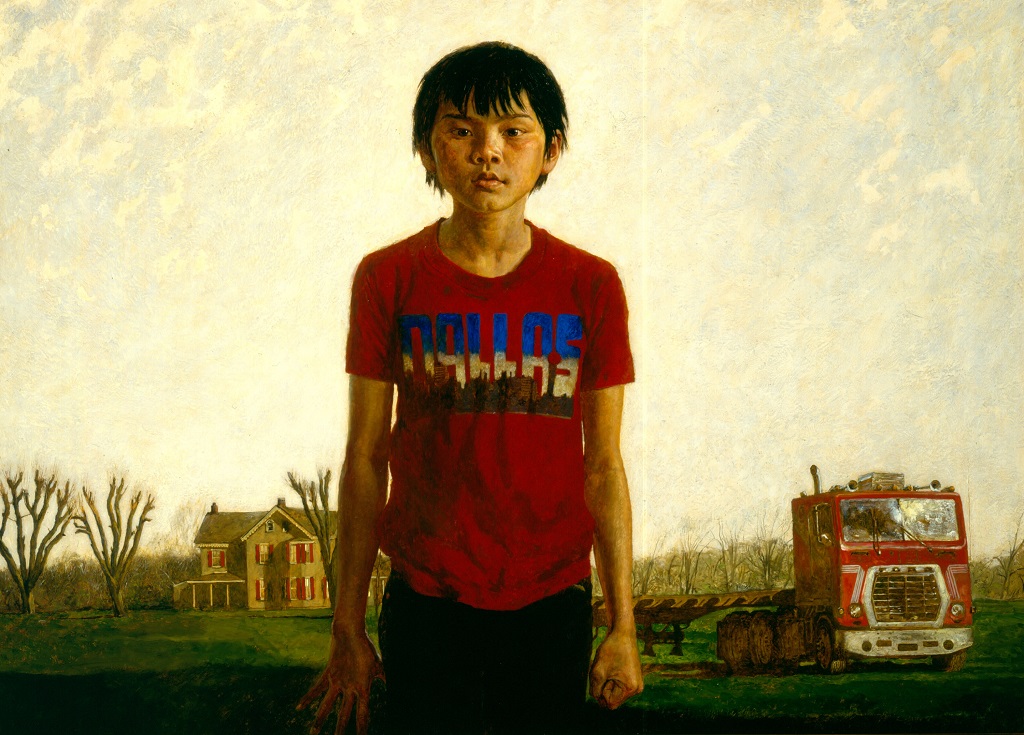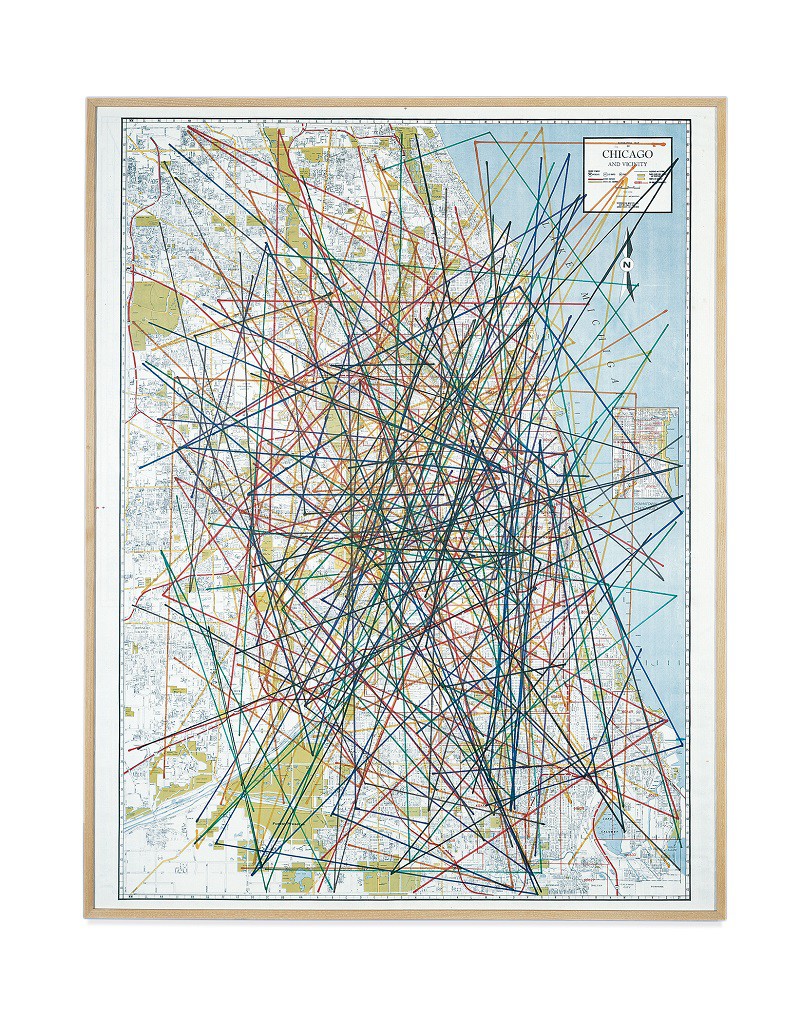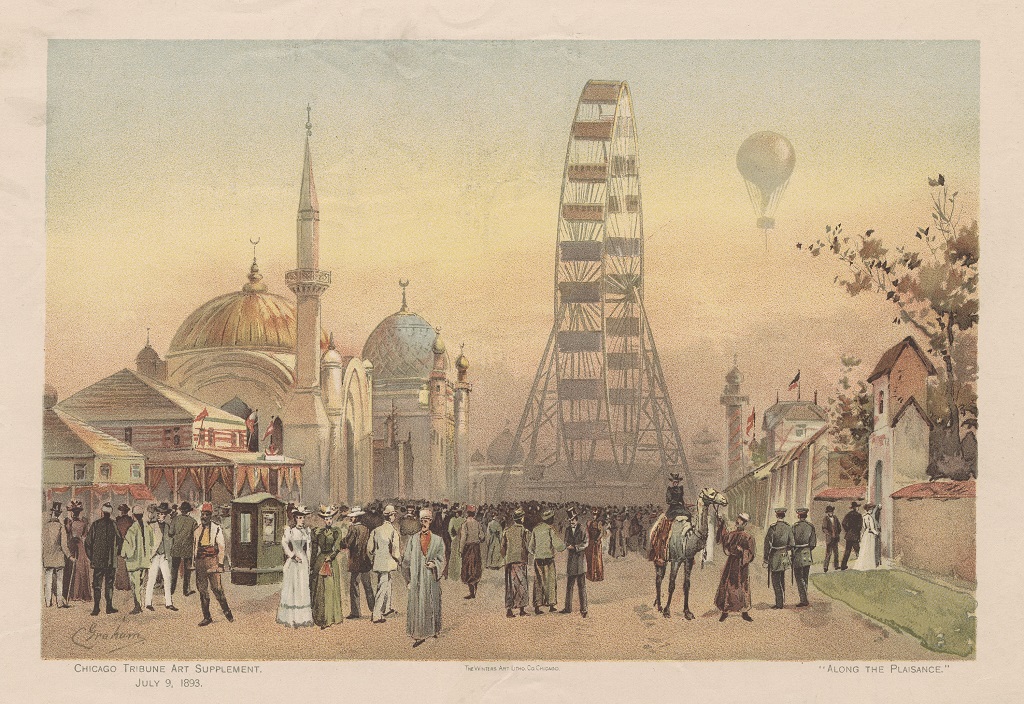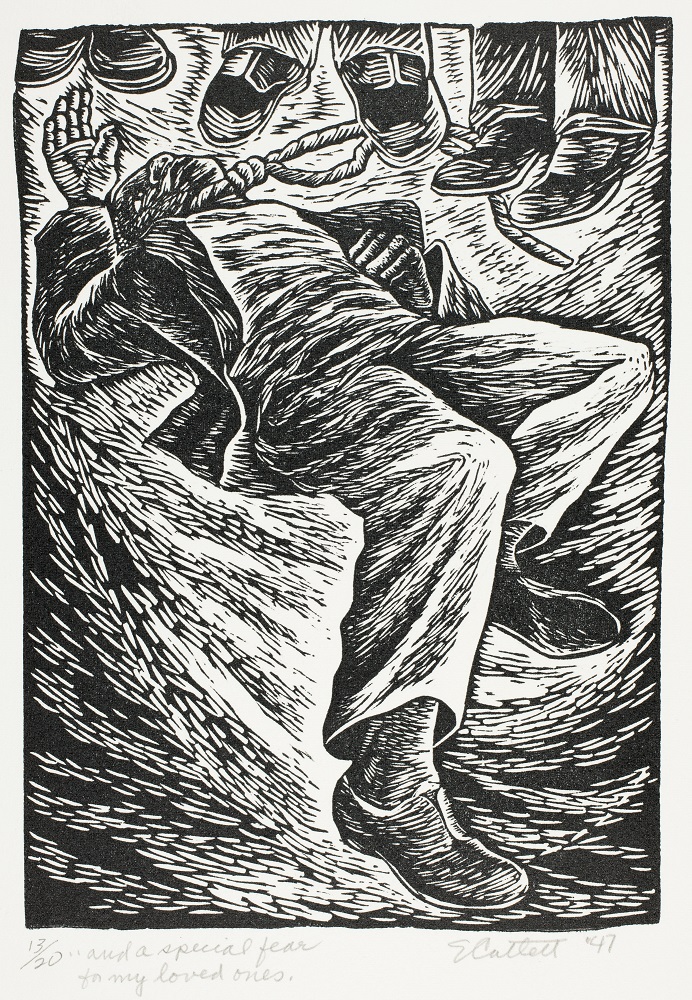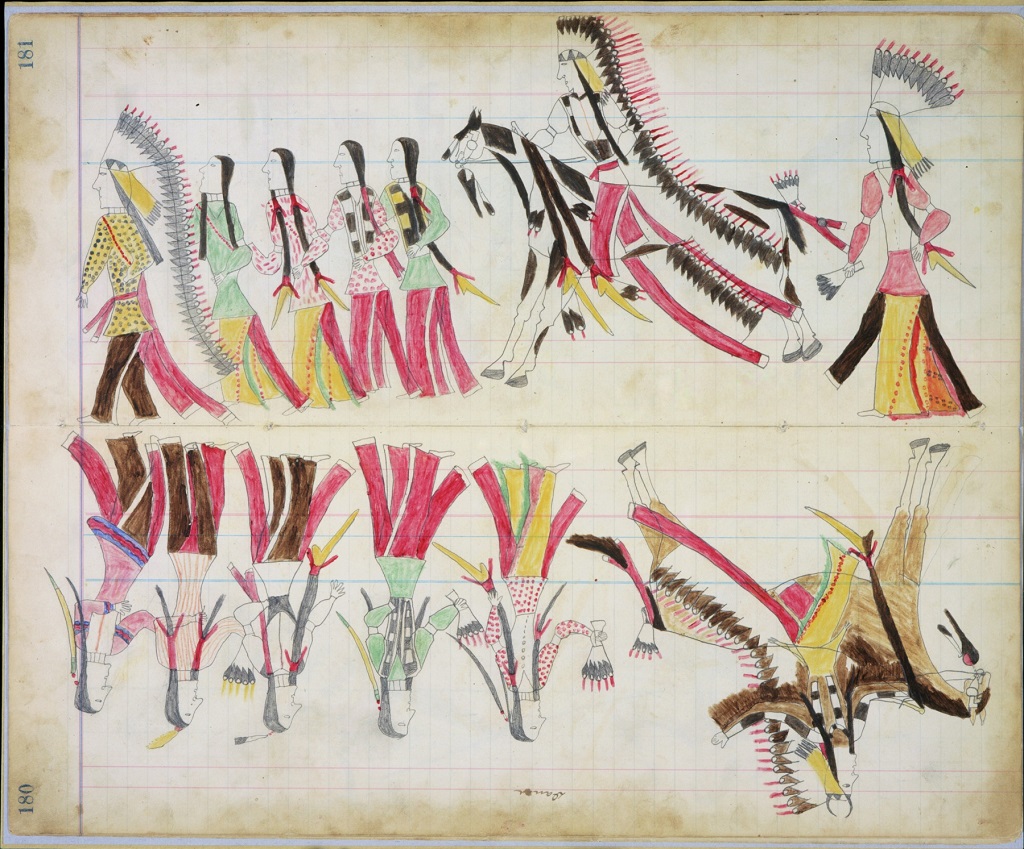Authors:
Jennifer Barron, Kennedy High School
Melissa Covington Tanner, Art Institute of Chicago
With contributions from:
Laura Lang, PhD, University of Wisconsin—Madison, Literacy Consultant
Mary Hawley, Literacy Consultant
Summary:
In this lesson, students will explore works of art and literature to better understand the impact of forced journeys on individuals and their families, especially when they have to leave their home culture behind. As a culminating activity, students will write a poem that reflects on the effects of a forced journey.
Lesson Overview
Grade Levels: 9–12
Time Needed: 2–3 class periods, 40–50 minutes each
Background Needed
No specific background is needed for this lesson.
Essential Questions
- Why are some individuals forced to take journeys during the course of their lives?
- How are children and other family members affected by these forced journeys, especially when they must leave their home culture behind?
- How can art and literature help us better understand the impact of these forced journeys and the ways that people respond to them?
Enduring Understandings
- Works of art and literature can express the complex feelings that people have when they are forced to make a journey that is not of their choosing.
- By closely reading these works of art and literature, we can better understand the impact of these forced journeys on individuals and family members.
Objectives
- Students will determine central ideas or themes of a text and analyze their development.
- Students will analyze how two or more texts address similar themes or topics in order to build knowledge and to compare the approaches the authors take.
- Students will prepare for and participate effectively in a range of conversations and collaborations with diverse partners, building on others’ ideas and expressing their own clearly and persuasively.
- Students will integrate and evaluate information presented in diverse media and formats, including visually and orally.
Key Vocabulary
- bilingual
- composition
- displacement
- refugees
- tension
Standards Connections
Common Core State Standards
Anchor Standards in Reading: http://www.corestandards.org/ELA-Literacy/CCRA/R/
- CCSS-ELA Reading Anchor Standard 2: CCSS.ELA-LITERACY.CCRA.R.2
- CCSS-ELA Reading Anchor Standard 9: CCSS.ELA-LITERACY.CCRA.R.9
Anchor Standards in Speaking and Listening: http://www.corestandards.org/ELA-Literacy/CCRA/SL/
- CCSS-ELA Speaking and Listening Anchor Standard 1: CCSS.ELA-LITERACY.CCRA.SL.1
- CCSS-ELA Speaking and Listening Anchor Standard 2: CCSS.ELA-LITERACY.CCRA.SL.2
Materials
In the Classroom
- writing journals or looseleaf paper
- a computer with Internet access
- an interactive whiteboard or another classroom projector
- art supplies, such as watercolors, clay, crayons, and markers; and/or printouts of photographs
Works of Art
- Jamie Wyeth, Kalounna in Frogtown
Other Resources
- Art Study: Kalounna in Frogtown, Read to Build Knowledge
- Rhina P. Espaillat, “Bilingual/Bilingüe”: http://www.poetryfoundation.org/poem/175878
- Close Reading Guide: “Bilingual/Bilingüe”
- Li-Young Lee, “I Ask My Mother to Sing”: http://www.poetryfoundation.org/poem/246596
- Close Reading Guide: “I Ask My Mother to Sing”
Lesson Steps
- Have students brainstorm reasons for forced journeys: Have students generate a list of reasons that explain why individuals or families are sometimes forced to take journeys, to move from one place to the other, from one home to another. Encourage them to include a wide variety of reasons (i.e. political discord, physical safety, family changes, better opportunities, health issues, etc.)
- Lead a quick-write: Tell students to take a few minutes to write about a time when they didn’t have a choice about taking a journey. As they write, guide them with questions like these:
- Why did you embark upon that journey (to a new neighborhood, a new home, to a new school)?
- How did it make you feel?
- How did that journey impact those around you?
- Guide a close reading of Jamie Wyeth’s Kalounna in Frogtown: This activity is designed to help students attend to specific details within a painting, details they can use to make inferences about an individual’s feelings about being forced to move to a new environment.
Begin by projecting Kalounna in Frogtown by Jamie Wyeth. Discuss the image with questions such as the following. Remind students to support their responses with specific details from the image.
- What do you see first? What aspects of this image draw your attention? Why?
- Notice as many details as you can about the setting of this painting. What does the setting tell you about where this boy is located?
- What is unique about the way the boy is positioned in the painting? Why do you think the artist placed him that way?
- Do you think the boy lives in the house behind him? Why or why not?
- Notice the boy’s hands (one hand is open—the other in a fist) and body language. What words would you use to describe them? What do you think is the meaning behind his hands?
- Does the boy’s shirt fit with the background? What’s the difference between the two?
- What do you think the artist wants to convey about the boy’s feelings? What details from the painting inform your conclusion?
- Have students read an informational text about the artwork: Distribute copies of the Art Study: Kalounna in Frogtown, Read to Build Knowledge (AACL URL needed). As students read, they should record or highlight details within the text that help them better understand this work of art.
- Revisit the painting: Return to the questions above, asking students if they would change their initial responses now that they know a bit more about the artist and Kalounna. Students should support their responses with specific details from both the artwork and the text.
- Discuss the concept of displacement: Explain that people who are forced to leave their home cultures to live in a new culture may experience a sense of displacement, a feeling that they do not belong in the new place. Does the artist use any elements of the painting to imply that Kalounna is feeling a sense of displacement? Use evidence from the painting and the text to support your argument.
- Introduce the poems: Explain to students that they are going to explore how two poets have reflected on the effects of a forced journey. Begin by giving the title of each poem (“Bilingual/Bilingüe” and “I Ask My Mother to Sing”) and asking students to make predictions about each poem. Record their predictions.
Then project each poem one at a time: “Bilingual/Bilingüe” by Rhina P. Espaillat (http://www.poetryfoundation.org/poem/175878) and “I Ask My Mother to Sing” by Li-Young Lee (http://www.poetryfoundation.org/poem/246596). Invite a student to read each poem aloud to the class. If possible, “Bilingual/Bilingüe” should be read by someone who is fluent in Spanish. Alternately, students can view a video of Rhina Espaillat reading her poem (https://www.youtube.com/watch?v=aNSEoNW90rQ).
- Have students do a close reading of the poems: Divide students into small groups of three or four. Each group should have online access to one of the poems. Depending on which poem they will analyze, students should also receive a copy of either the Close Reading Guide: “Bilingual/Bilingüe” or the Close Reading Guide: “I Ask My Mother to Sing”. Have them work in their groups to reread the assigned poem and answer the questions on the Close Reading Guide.
Bring the class back together. Display one poem at a time and invite the groups to share their responses to the questions on the Close Reading Guide for that poem.
Questions for “Bilingual/Bilingüe”:
- In the first line, Espaillat writes, “My father liked them separate.” What does “them” refer to? Why might he want to keep these two things separate?
- How does the daughter react to her father’s request? What evidence in the poem supports your answer?
- What stylistic choices and literary devices does Espaillat use in order to convey her message? In what ways does the structure of the poem contribute to its meaning?
- Does the father ever become comfortable with the daughter’s love of words in either language? Cite evidence in the text that supports your answer.
- Rhina Espaillat was seven years old in 1939, when her family was forced to leave the Dominican Republic during the dictatorship of Rafael Trujillo. They settled in New York City. What does this information add to your understanding of the poem?
Questions for “I Ask My Mother to Sing”:
- What do you learn about the speaker’s family from the first stanza?
- What are the women singing about? Cite evidence in the text that supports your answer.
- How does the speaker feel about the subject of their song? How might the speaker’s feelings be different from those of his mother and grandmother? Cite evidence in the text that supports your answers.
- Reread the last stanza. What do you think has caused the women to begin to cry? What does it mean that neither one stops singing?
- Li-Young Lee’s parents were forced to leave China before Lee was born. Lee was born in Indonesia, but his family had to flee that country as well because of the political situation. They lived in Hong Kong, Macau, and Japan before coming to the U.S. What does this information add to your understanding of the poem?
- Have students compare the poems and the painting: Guide a discussion with questions such as the following:
- In each poem there is a parent and a child. Compare how each poem portrays the relationship between the parent and the child.
- How do the two poems differ in style and structure? How are they similar in style and structure?
- Are any of the individuals in these poems experiencing a sense of displacement? Use evidence in the text to support your answer.
- What message does each poem express about the effects on family members of leaving behind a home culture?
- Compare and contrast how the two poets express a sense of displacement with how Wyeth conveys displacement in his painting. What “tools” are used by the creators of each work? What makes these tools effective?
- Which of these three works (the two poems and the painting) do you feel the strongest emotional connection with? What elements of the work create that connection for you?
- Have students write a poem: The painting and the two poems that students have examined in this lesson explore the effects of a forced journey on individuals and their families. Tell students that they will now write a poem about these effects. The poem can be from their own perspective, or they can take on the persona of someone whose family has experienced a forced journey, such as Kalounna. Students can refer to “Bilingual/Bilingüe” and “I Ask My Mother to Sing” as models. To provide support for writing the poem, you might have them jot down ideas in response to any or all of these questions:
- Think about a place that you loved when you were a child. Describe the place by picturing it through the eyes of a child.
- If you were suddenly forced to move, what would you miss the most about the place where you are now? Use all your senses to describe what you would miss.
- Have you ever experienced a sense of displacement? Jot down words that describe the environment where you experienced displacement. Then describe how you felt.
Invite students to display their completed poems in the classroom. You might also want to allow time for students to read their poems aloud in class.
Additional Resources
Terra Foundation for American Art. “Kalounna in Frogtown.” http://collection.terraamericanart.org/view/objects/asitem/People$0040388/3?t:state:flow=c52b370d-98a7-4fba-aba0-5c08eae27622

